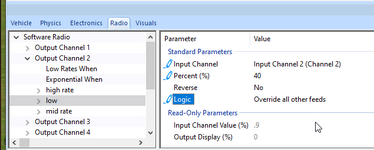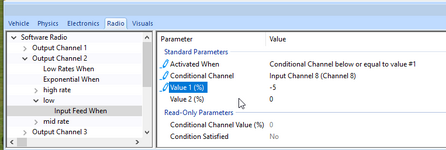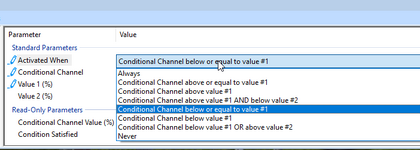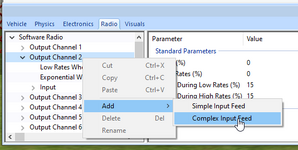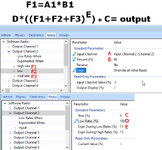legoman, I followed your logic and, after some experimentations and condition adjustments, I was able to set up three mutually exclusive rates for one control surface (the other surfaces will follow in similar fashion), using the three positions of Switch C. I thank you for your input!
However, I question the setting “Override all other feeds” in the case when there are other valid inputs mixed with the primary ones. I think it is necessary to leave it to “Add to other feeds”.
Also, to avoid introducing the additional scaling for Low Rates, I had to either set “Low Rates When” to Never, or set Low Rates to 100%.
As for Expo values, I was not able to set up three different values associated with the three switch positions. I can get two values, one is the expo value for low rates, by setting “Low Rates When” to the condition for one of the switch positions. The other two switch positions get the same expo value for high rates, but that seems like a kludge. Any suggestions there?
In the process, I think I found an unrelated issue of unwanted interaction between expo and end points. I will post it in a different thread.


